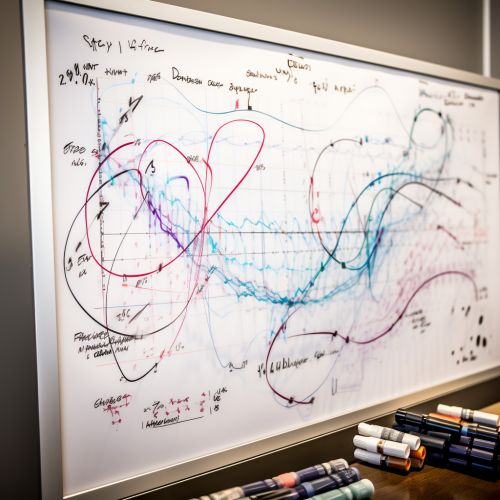Probability Theory
Introduction
Probability theory is the branch of mathematics that deals with the analysis of random phenomena. It is a fundamental discipline that has applications in fields as diverse as physics, biology, engineering, and computer science. The outcomes of a random event cannot be determined before it occurs, but it may be any one of several possible outcomes. The actual outcome is considered to be determined by chance.


History
The mathematical study of probability theory began in the 17th century with the work of mathematicians such as Pascal and Fermat. They were interested in understanding the outcomes of games of chance, and developed the first mathematical models of probability.


Basic Concepts
The basic concepts of probability theory include the definition of probability, random variables, and probability distributions.
Probability
Probability is a measure of the likelihood that a particular event will occur. It is a number between 0 and 1, where 0 indicates that the event will not occur, and 1 indicates that the event is certain to occur.
Random Variables
A random variable is a variable whose possible values are numerical outcomes of a random phenomenon. There are two types of random variables, discrete and continuous.
Probability Distributions
A probability distribution is a mathematical function that provides the probabilities of occurrence of different possible outcomes in an experiment.


Theorems and Laws
Probability theory is based on a set of theorems and laws that describe the behavior of random events. These include the law of large numbers, the central limit theorem, and Bayes' theorem.
Law of Large Numbers
The law of large numbers states that as a sample size grows, its mean gets closer to the average of the whole population.
Central Limit Theorem
The central limit theorem states that the distribution of the sum (or average) of a large number of independent, identically distributed variables approaches a normal distribution, regardless of the shape of the original distribution.
Bayes' Theorem
Bayes' theorem describes the probability of an event, based on prior knowledge of conditions that might be related to the event.


Applications
Probability theory has a wide range of applications in many fields of study. In computer science, it is used in machine learning and data mining. In physics, it is used to predict the behavior of particles. In finance, it is used to model the behavior of financial markets.


